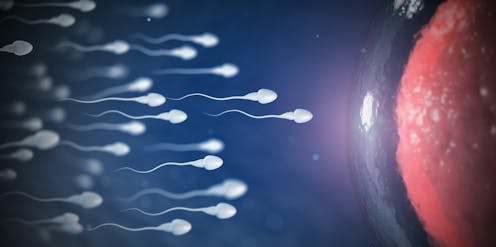A raunchy new 'Big History' tells the story of sex, but raises some unanswered questions
- Written by Melissa Kang, Associate Professor in the Specialty of General Practice, University of Sydney

David Baker’s Sex: Two Billion Years of Procreation and Recreation[1] condenses the story of the evolution of (predominantly) reproductive sex into 300 pages. That is quite a feat.
The book is one of the latest additions to the popular “Big History[2]” genre. First defined by Macquarie University historian David Christian[3] in the early 1990s, the idea of Big History is that the temporal scale on which history should be studied is “the whole of time”. Its ambition is no less than to survey history from the Big Bang to the present, taking an interdisciplinary approach to its scholarship.
Baker is a science writer with a PhD in Big History and one of the writers behind the Big History Crash Course[4] on YouTube. In his introduction to Sex, he declares “this is the first book that seeks to weave together the grand narrative of sex in its entirety”.
Sex: Two Billion Years of Procreation and Recreation – David Christian (Black Inc.)
The book is divided into three sections. The first – titled Evolutionary Foreplay – covers the period from 13.8 billion to 66 million years ago. Baker races through the 10 billion years following the Big Bang, when “the cosmos was devoid of life”.
He summarises the formation of Earth and its atmosphere, the origins of living organisms 3.8 billion years ago, the emergence of DNA, and the cloning (asexual reproduction) of “microscopic blobs living on the edge of underwater volcanoes”.
We are taken from the earliest forms of sexual reproduction between two single-celled organisms to the differentiation of cells, and on to the evolution of specialised reproductive cells, the gametes. This development was followed by the rapid appearance of diverse animal species, from fish and amphibians to reptiles, insects, dinosaurs, birds and mammals.

















